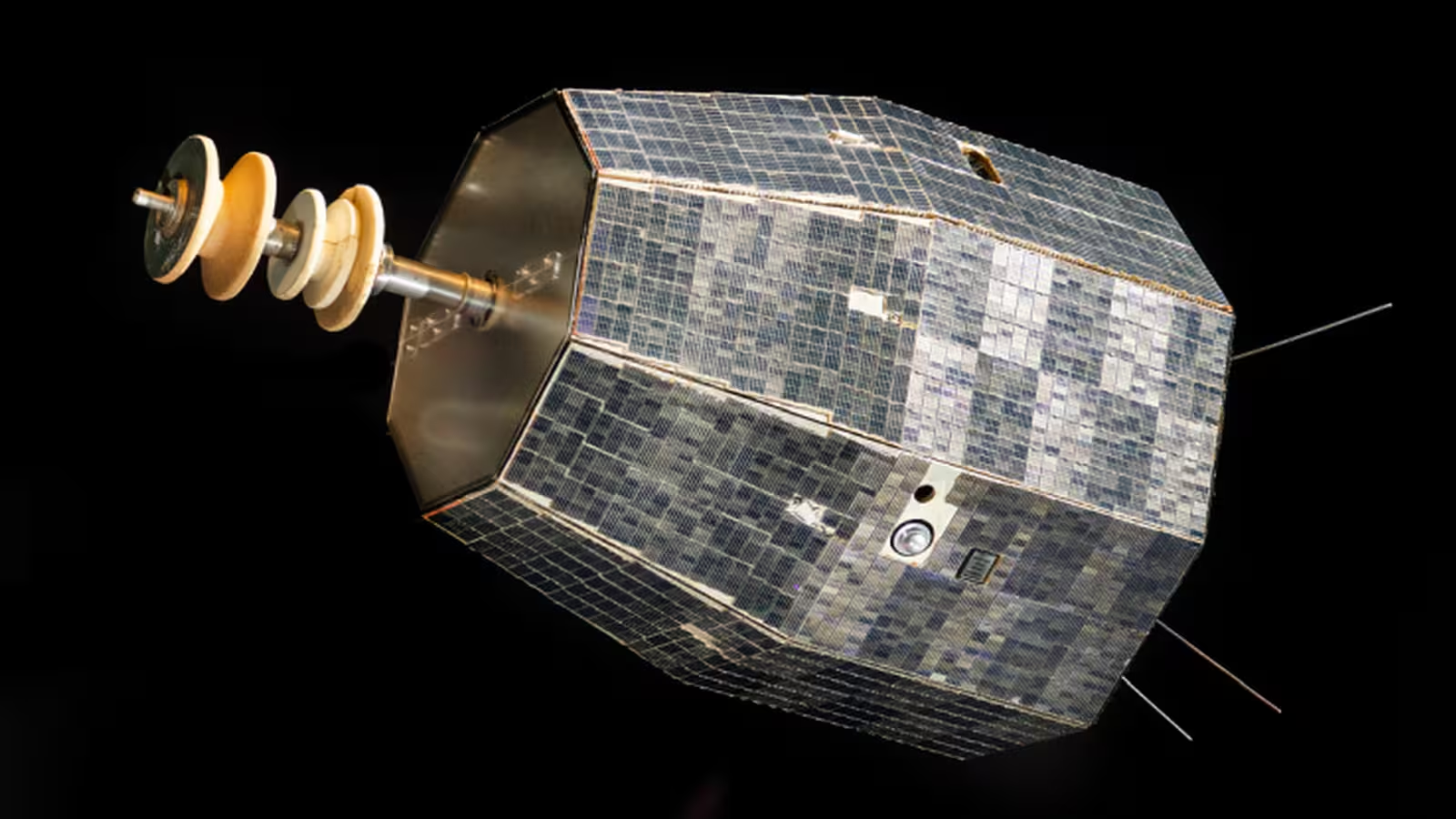4 Minutes
Unexpected Fast Radio Burst: Source Identified as Defunct NASA Satellite
A mysterious and powerful radio signal, known as a fast radio burst (FRB), was detected on June 13, 2024, leading to an intriguing discovery in the field of radio astronomy. Unlike most FRBs that originate from distant astrophysical events billions of light-years away, this event had a remarkably local source: the long-defunct NASA Relay 2 satellite, dormant in Earth's orbit since the late 1960s.
Background: Investigating the Origins of Fast Radio Bursts
Fast radio bursts are among the universe's most enigmatic phenomena, characterized by their immense energy and fleeting duration—often lasting mere milliseconds. Some FRBs pack as much radio energy as half a billion suns within a blink of an eye. These cosmic signals usually travel across intergalactic distances, and only one known source has ever been found within the Milky Way—a magnetar some 30,000 light-years away. As detection technology advances, so too does the challenge of distinguishing natural cosmic signals from those inadvertently created by human technology.
The ASKAP Discovery: Pinpointing the Signal
On June 13, 2024, a consortium of astronomers led by Dr. Clancy James at Curtin University, under the International Centre for Radio Astronomy Research (ICRAR), detected a short burst spanning frequencies from 695.5 to 1,031.5 megahertz using the Australian Square Kilometre Array Pathfinder (ASKAP). After careful analysis of timing and wave propagation, the team surprisingly traced the event not to the depths of the universe, but to an object within Earth's immediate space environment—roughly 4,500 kilometers away.
To identify the culprit, the research team cross-referenced the signal's time and location with satellite tracking data using the Skyfield Python module. Their investigation pointed clearly to NORAD ID 737, better known as NASA's Relay 2 satellite, launched in 1964 and operational for just three years before being decommissioned. Since then, Relay 2 has silently drifted between 1,867 and 7,648 kilometers above the Earth, a relic of the early space age.
Understanding the Source: Electrostatic or Plasma Discharge?
Upon further study, scientists ruled out the possibility that the detected burst resulted from reflected sunlight—a known source of false positives in past cases, such as a gamma-ray event traced back to sunlight bouncing off debris. Instead, two potential origins emerged: a plasma discharge caused by the impact of a minuscule space rock (micrometeoroid), or an electrostatic discharge.
Electrostatic discharge is a known risk for orbiting satellites. As spacecraft traverse Earth's geomagnetic field, they accumulate charged electrons; once the accumulated charge surpasses a threshold, a sudden release can occur, emitting a burst of radio energy. This mechanism has previously been identified by the Arecibo Observatory, which in 2017 uncovered similar radio emissions from GPS satellites. While the impact of a micrometeoroid remains possible, the research team considers electrostatic discharge the more likely event in this instance.
Implications for Space Science and Technology
The detection of such a short, gigahertz-frequency radio burst from a satellite inactive for over half a century is both surprising and significant. According to the researchers, "The observation of such a short burst at GHz frequencies is unexpected and raises the prospect of new methods for remote sensing of arc discharges from satellites."
The findings underscore an emerging challenge in modern radio astronomy: as our space environment becomes increasingly crowded with active satellites and orbital debris, distinguishing between signals of terrestrial technology and genuine astrophysical phenomena is more important than ever. These anomalous signals can easily mislead scientists searching for cosmic transients such as fast radio bursts, gravitational waves, or high-energy particles.
Beyond pure science, the study also highlights the need for ongoing monitoring of space weather-related hazards such as electrostatic discharges, which can incapacitate satellites or, in rare circumstances, create confusion in global communications and navigation systems.
Expert Perspectives and Future Directions
Dr. Clancy James, who led the ASKAP study, emphasizes, "Our observation opens up new possibilities for the remote sensing of electrostatic discharge, which poses a serious threat to spacecraft, and reveals a new source of false events for observations of astrophysical transients."
Going forward, researchers suggest that retrofitting current survey instruments, or deploying new, dedicated detectors, could help monitor and characterize such discharges in real time. This would not only improve the accuracy of cosmic radio burst surveys but also contribute to the safety and reliability of satellite operations in an evolving near-Earth space environment.
Conclusion
The surprise discovery of a powerful radio burst from the long-abandoned NASA Relay 2 satellite offers vital lessons for both astrophysics and space technology. It demonstrates the importance of differentiating between artificial and natural signals in a crowded orbital neighborhood and advances our understanding of how old satellites can continue to influence scientists’ observations decades after their mission end. As humanity’s presence in space grows, so too does the need for vigilance against the unexpected—and the opportunity to learn from these cosmic anomalies.
Source: sciencealert



Comments